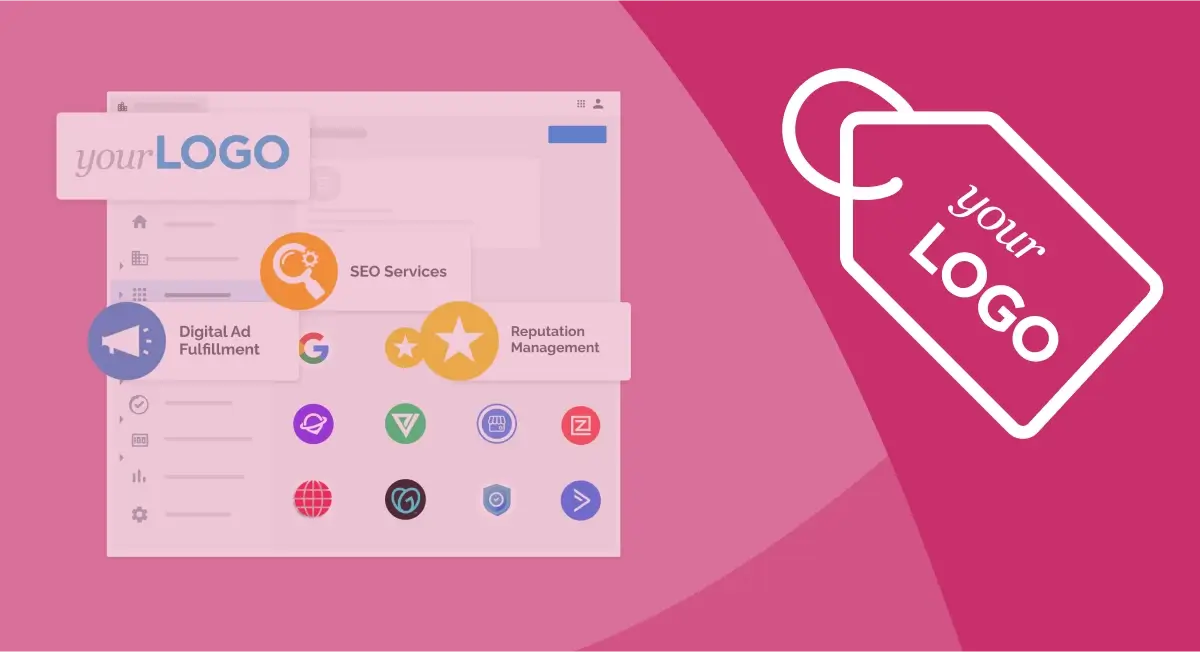Are you ready to supercharge your clients’ businesses with white label reporting? Discover how this invaluable tool can elevate your offerings, setting you miles ahead of your competitors.
In this beginner’s guide to white label reporting, we’ll walk you through the key features that can transform your business operations. From crafting visually stunning dashboards that mirror your brand identity to the magic of automated reports and real-time metrics monitoring—we’ve got it all covered.
Continue reading to learn how to harness the potential of white label reporting, and help your clients make better, more informed decisions.
Give your clients direct access to proof-of-performance reporting
What Is White‑Label Reporting?
White label reporting is like a ‘smart report template’ you can share. Think of it as a blank canvas—you paint it with your brand’s colors, logo, and style. It’s perfect when you are stretched for time and work with multiple clients who need regular progress reports.
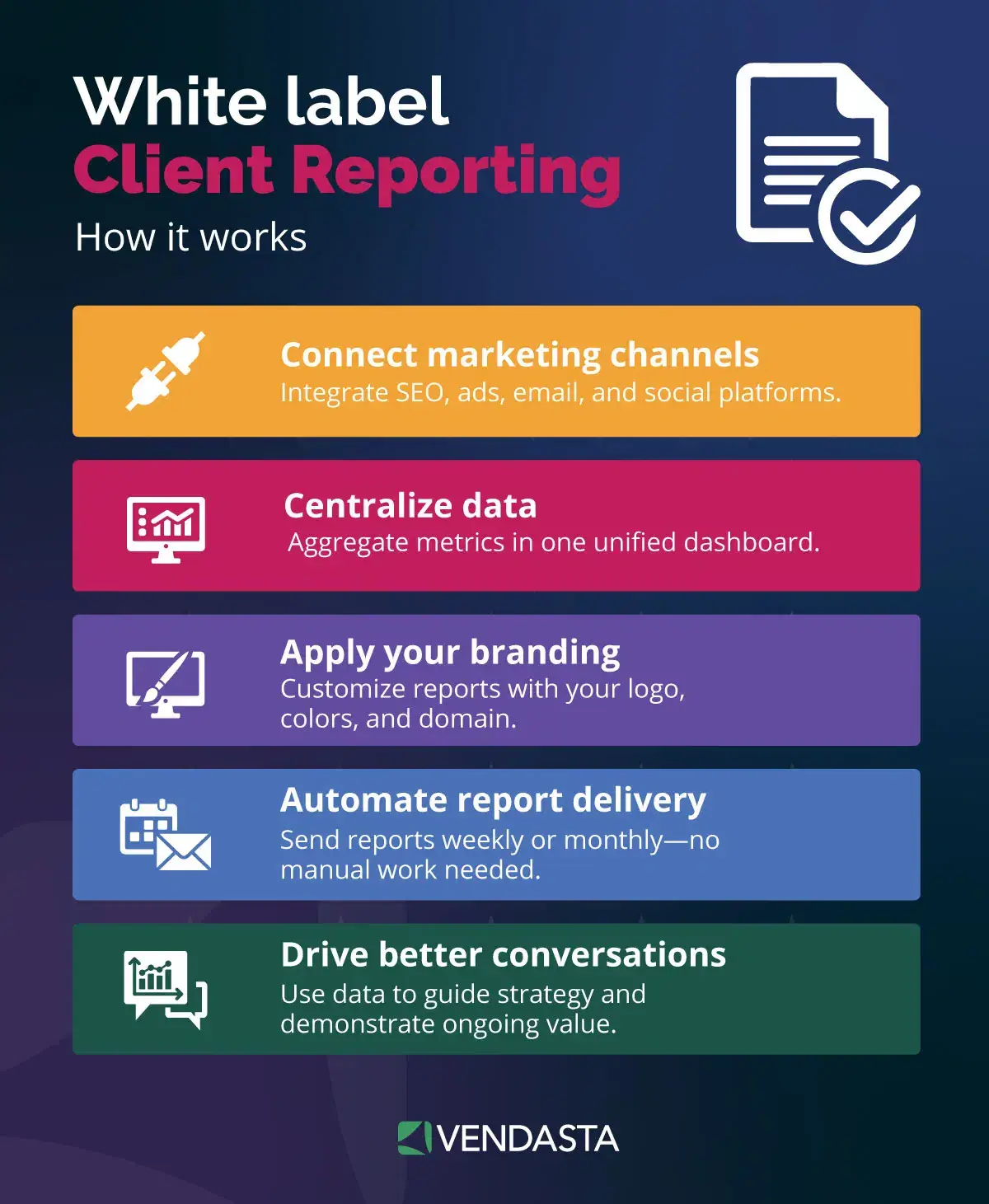
The main benefit? You don’t need to reinvent the reporting wheel for each client. It saves you time and money while making sure your reports always look top-notch. With the right white label reporting tool, you can create custom client dashboards that suit each client’s style with just a few clicks.
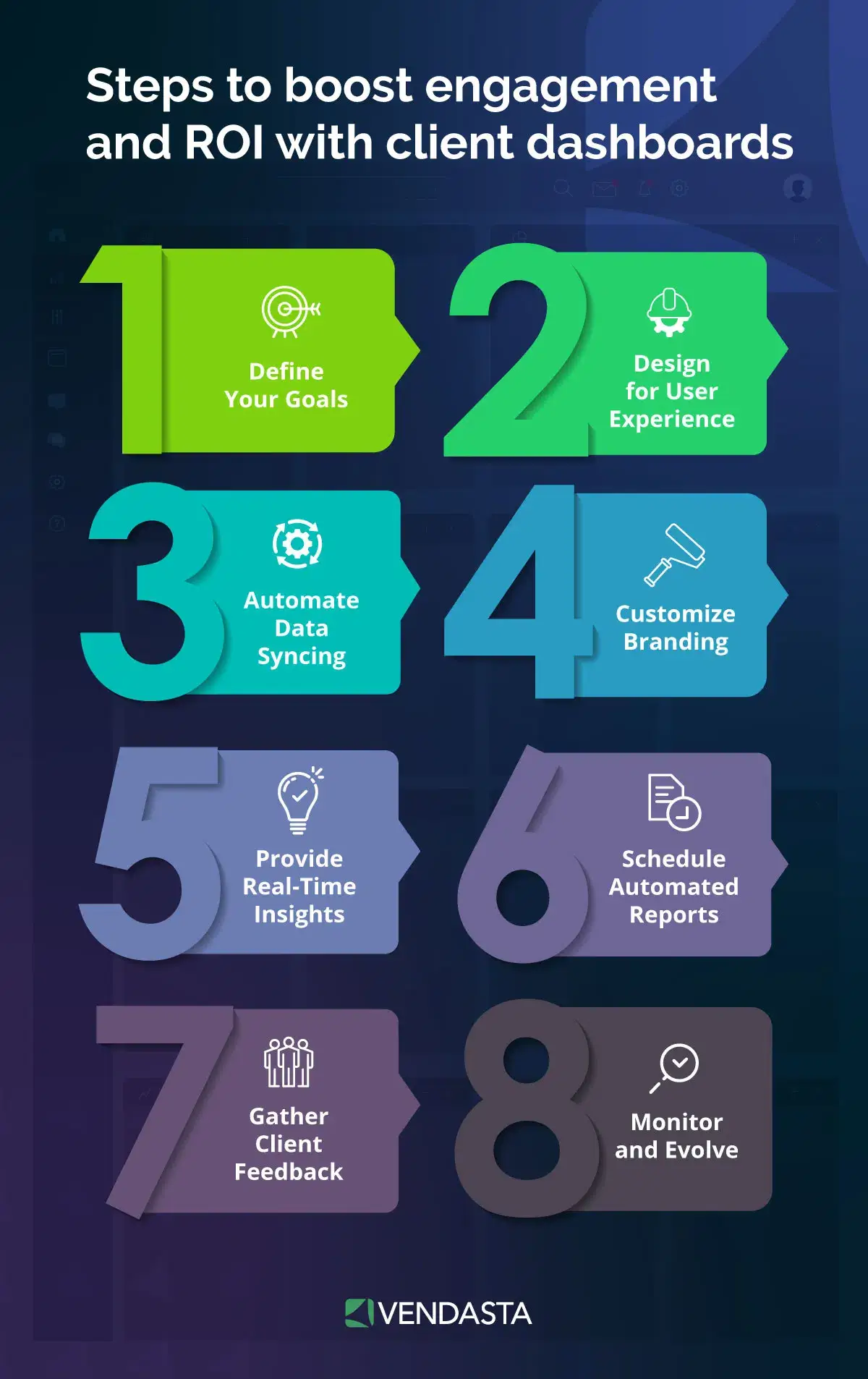
What it boils down to is white label reporting is your secret weapon to offer valuable data insights without the headache of building a brand new report from scratch each time you need one.
Plus, you can showcase your professionally illustrated insights in a way that matches your brand, leaving a great impression on your clients as well as making it crystal clear for them to understand.
Use Cases for White‑Label Reporting
White label reporting has several use cases across various industries. Here are just a few examples:
Marketing Agencies
A marketing agency’s main job is to seek out and secure a treasure trove of data about their clients’ online performance. With white label reporting, they can transform this data into a meaningful narrative, presenting their clients with tailored insights into their campaign’s performance.
But what truly sets white label reporting apart is the ability to tailor these insights to the specific KPIs that matter most to each client’s industry.
Take a look at the infographic below to see some of the most important KPIs across five core industries:
- E-commerce businesses often prioritize metrics like conversion rate, average order value, shopping cart abandonment rate, and customer lifetime value.
- B2B services lean heavily on lead volume, customer retention, client satisfaction scores, and upsell or cross-sell rates to measure success.
- Local service providers track website traffic to location pages, online bookings, customer reviews, and repeat visit rates.
- Healthcare organizations focus on patient acquisition and retention, appointment booking rates, service page traffic, and online reviews.
- Software and SaaS companies use metrics like monthly recurring revenue (MRR), churn rate, and net promoter score (NPS) to gauge customer health and revenue growth.
By aligning your white label reports with these industry-specific KPIs, you’re not just reporting data—you’re delivering clarity, strategy, and value in a format that clients immediately recognize as relevant and impactful.
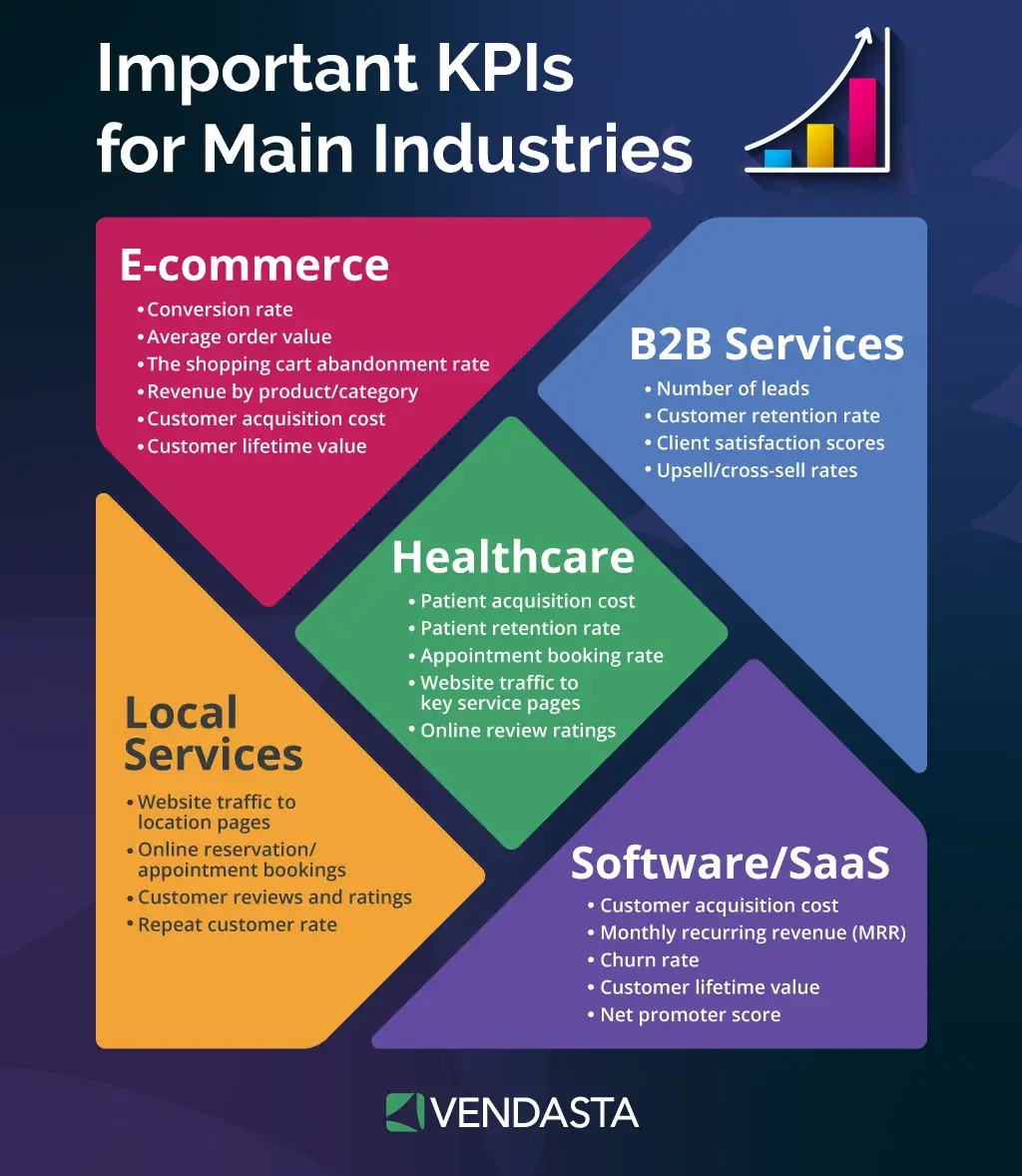
Client reports paint a vivid picture of success, guiding clients to make better, more informed decisions, and truly reflect the efforts you have made to improve their online presence.
But it doesn’t stop at data—it’s about marketing yourself too. Prospective clients tend to warm up more quickly to agencies referred by their friends, partners, and associates—because they are trustworthy sources of information.
White label reporting tools empower marketing agencies to create reports that delight their current clients and put their skills and expertise on full display for prospective ones.
Consulting Firms
Consulting firms can leverage white label reporting to keep their clients well-informed about project progress. These reports cover vital metrics, including:
- Budget
- Project timelines
- Deliverables
For consulting firms, white label reporting is great for ensuring clients have a clear view of the journey toward their goals.
Software Companies
That’s right, software companies have a powerful ally in white label reporting, as it offers their clients insightful reports about things like their software’s performance. These reports dive into essential metrics, including:
- Uptime
- Response time
- Error rates
It’s all about giving clients a clear picture of how their software is delivering results to those who depend on it for their daily operations.
Also see: 14 White-label business opportunities and reselling business ideas
Benefits of White‑Label Reporting
White label reporting has become a go-to solution for agencies and businesses of all sizes, and the reasons are crystal clear. Let’s take a look:
1. Branding
The magic of white label reporting lies in its ability to infuse your company’s identity into every report. With your logo and colors front and center, you’re enhancing brand recognition and making your company’s name and services unforgettable for clients.
2. Time-saving
Say goodbye to hours spent carefully crafting individual reports for each client. White label reporting enables you to generate high-quality reports swiftly and efficiently. This newfound freedom allows you to focus on more critical tasks.
3. Professionalism
When it comes to business with prospects and recent additions, first impressions matter. Cement your professionalism and years of experience in your client’s eyes when you hand them a customized report adorned with your branding. Their confidence in your services will soar, and you’ll shine amidst the competition.
4. Client Satisfaction
White label reporting isn’t just about data; it’s about understanding how to use it. Tailored reports with relevant data and analysis will empower your clients to grasp the real impact of your services, boosting satisfaction, and likely leading to increased client retention and referrals.
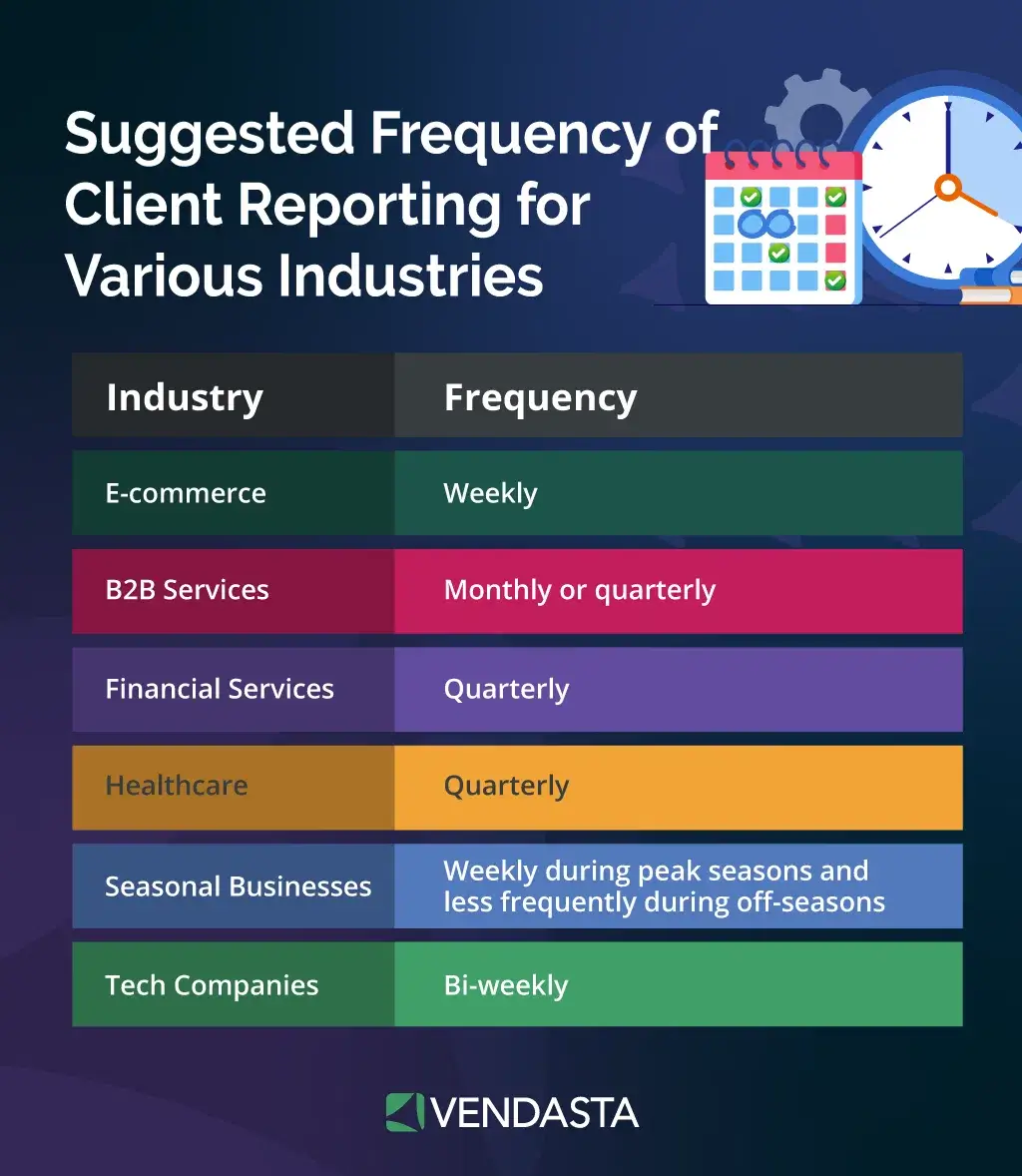
5. Scalability
White label reporting tools can grow as your business does. As your client base expands, you can upgrade to new features and tools in order to seamlessly generate reports for new clients without compromising on quality. This scalability ensures you stay competitive and meet the demands of your ever-growing portfolio.
In a nutshell, white label reporting isn’t just a tool; it’s a game-changer for businesses aiming to enhance their branding, efficiency, and client satisfaction. With a white label reporting tool, you’ll save time, radiate professionalism, and produce reports that genuinely reflect the impact of the services you deliver to local businesses.
Also see: The ultimate guide to white label
How White Label Reporting Works: Templates, Formats & Embedding Options
A great white label reporting solution offers flexibility in how reports are delivered. Here are common format options:
1. PDF Reports
- Ideal for executive summaries and offline sharing.
- Can be auto-generated and emailed on a schedule.
- Supports branded cover pages and styling.
2. Web-Based Dashboards
- Interactive, real-time access to performance data.
- Allow clients to drill down into metrics.
- Branded URLs, custom domains, and user permissions available.
3. Excel or CSV Exports
- Useful for clients who want raw data for internal analysis.
- Can be generated on demand or via automated workflows.
Bonus: Some platforms support hybrid formats—like a live dashboard with downloadable PDF snapshots—for maximum flexibility.
Embedding Options: Seamless Integration Into Your Product
For SaaS companies and advanced agencies, embedding white label reports directly into a client-facing portal or app creates a frictionless user experience.
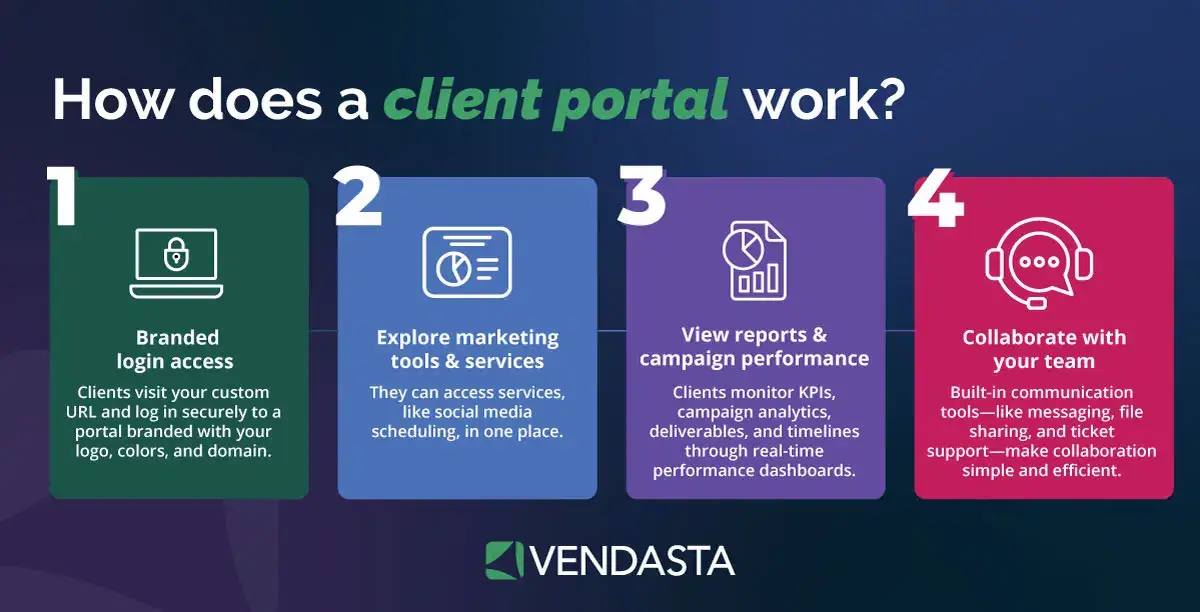
Common Embedding Methods:
- iFrame Embeds: Embed dashboards within an existing app or webpage.
- JavaScript Widgets: Add modular reporting elements to client portals.
- API Integrations: Build custom workflows and populate your own front end with data from the reporting engine.
Key Embedding Features to Look For:
- Full CSS customization for styling.
- User authentication and role-based permissions.
- Multi-tenant architecture to securely manage reports across many clients.
Why it matters: Embedding reports directly in your app boosts client engagement, reinforces your brand, and reduces support overhead.
Important Features to Look for in White Label Reporting Tools
When choosing a white label reporting software, there are a few aspects about them that you should think about. Selecting the right features can help you create professional-looking reports that match your brand and impress your clients, and choosing the wrong ones can leave you with a hard-to-use platform that gathers dust and wastes money. Here are some key features to keep in mind when choosing the right reporting software for you:
1. Customizable Templates That Scale
Look for tools that offer pre-built templates specific to key services (like SEO, social, PPC, or reputation management). Even better if you can auto-fill them with client-specific data. The ability to save and reuse templates means you spend less time building reports—and more time delivering insights.
2. Full Branding Control
Top platforms let you go beyond a logo. That means white-label dashboards, client portals with custom domains, personalized email reports, and even branded mobile apps. The more touchpoints that reflect your brand, the more professional and memorable the client experience.
3. Advanced Data Visualization
Clear, engaging visuals help clients understand what the numbers mean. Seek tools with modern, customizable data visualizations—bar charts, heatmaps, funnel charts, pie graphs—designed for non-technical stakeholders. Bonus points if clients can interact with dashboards in real time.
4. Real-Time Performance Metrics
Static PDFs are useful, but real-time dashboards provide always-up-to-date insights. Platforms that support automated syncing with platforms like Google Analytics, Facebook Ads, or HubSpot let clients track progress anytime—without waiting for you to send a report.
5. Seamless Integration with Other Tools
Ensure your reporting tool connects with the platforms you already use—CRM, marketing automation, ad platforms, and SEO software. Deep integrations prevent data silos and give your clients a holistic view of their performance.
6. Secure Client Access & Permissions
Your clients should have easy access to their reports, but you should control what they can see. Choose platforms with secure, role-based permissions so different users (e.g., marketing managers vs. business owners) only access what they need.
7. Embedded Dashboards & API Support
For SaaS platforms or agencies offering client portals, embedded dashboards provide a frictionless experience. Look for tools with iFrame, widget, or API integration options so you can bring data directly into your own apps or platforms—under your brand.
The infographic below highlights these critical capabilities—from centralized data management and automated reporting to real-time metrics and seamless marketing tool integration. These features aren’t just bells and whistles—they’re essential to delivering a smooth, scalable, branded client experience.
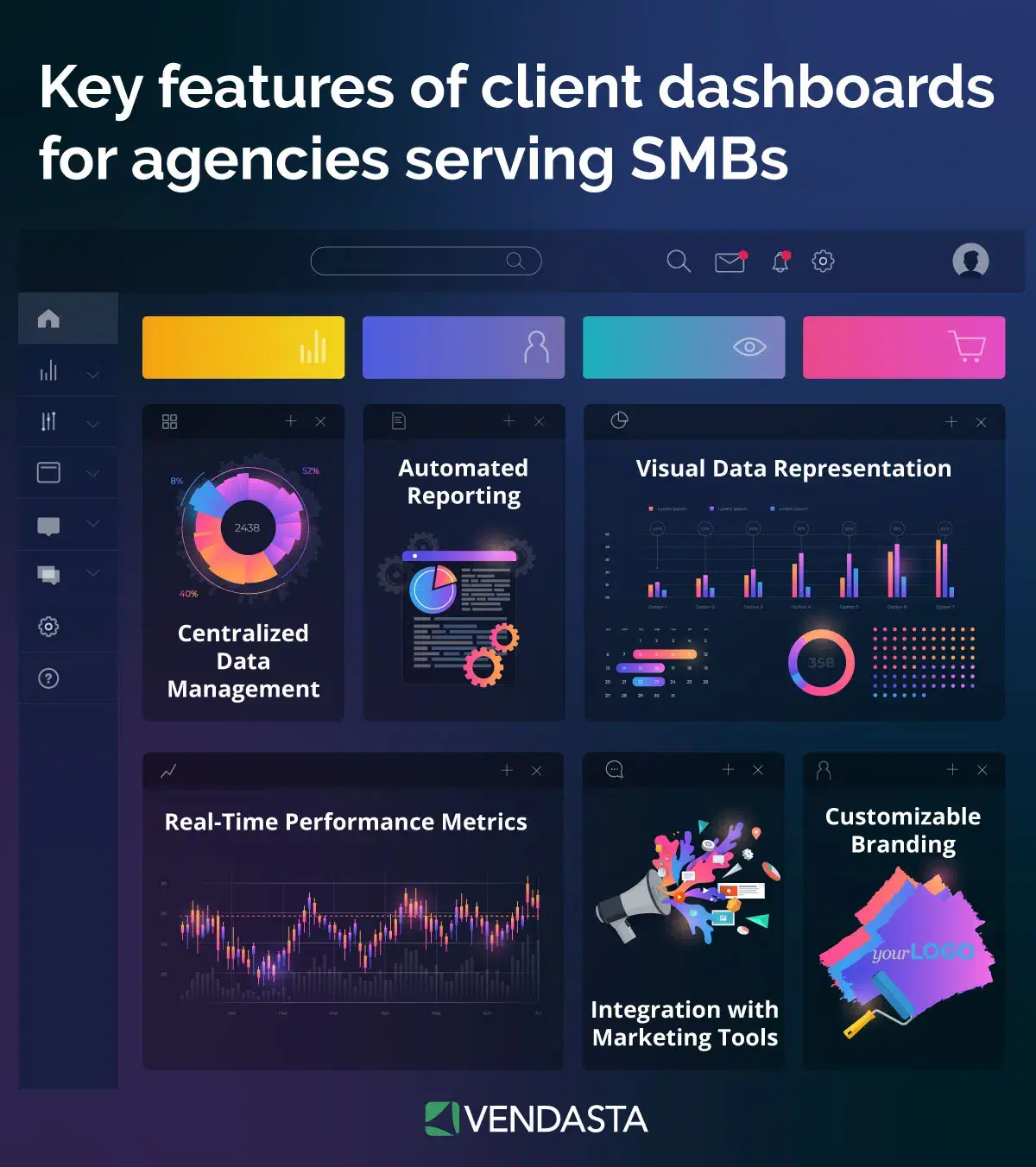
Choosing the Right White Label Reporting Tool
Not all white label reporting platforms are built the same—and choosing the right one can directly impact how professional, scalable, and client-friendly your services feel. Here are the top factors to evaluate before making a decision:
1. Must-Have Features
The tool should support the channels and metrics your clients care about—whether it’s SEO, PPC, social media, or e-commerce performance. Prioritize platforms that offer:
- Pre-built templates for your most-used services.
- Integrations with tools like Google Ads, Facebook Ads, GA4, HubSpot, or WooCommerce.
- Full white-label options: branded URLs, logos, colors, and even emails.
- Dashboard interactivity (not just static PDFs).
Pro tip: Look for real-time data syncing and customizable KPIs to offer on-demand insights that impress clients.
2. Ease of Use (for You and Your Clients)
Even the most powerful tool falls short if it’s clunky or hard to adopt. The ideal solution should be:
- Intuitive for both your team and your clients.
- Organized with drag-and-drop editors or customizable widgets.
- Equipped with automation features like scheduled report delivery.
A steep learning curve kills momentum. Choose tools that let your team onboard quickly and clients get value instantly.
3. Transparent Pricing
Choose a platform with pricing that scales with you—not against you. Ask yourself:
- Are there hidden fees (like user limits, report volume, or branding upgrades)?
- Does the tool offer a free trial or demo environment?
- Can it support growth as your client base expands?
Opt for vendors who are upfront about costs and offer scalable plans for agencies at different stages.
4. Stellar Support and Documentation
You don’t want to be left scrambling when something breaks—or worse, explaining bugs to your clients. Prioritize platforms that provide:
- Responsive customer support (chat, phone, or email).
- Knowledge base with tutorials, FAQs, and video walkthroughs.
- Active user community or agency partner network.
Great support can be the difference between a tool that enhances your business and one that holds it back.
Elevate Client Reporting with Vendasta’s White-Label Executive Report
Vendasta empowers digital marketing agencies, franchisors, MSPs, and technology providers to deliver world-class reporting to the small and medium-sized businesses (SMBs) they serve. With our white-label Executive Report, you can seamlessly showcase your clients’ performance across all marketing channels—under your own brand.
This AI-powered report is more than a dashboard. It’s a linchpin in customer journey automation that helps your clients see the value of your services—and helps you retain them longer.
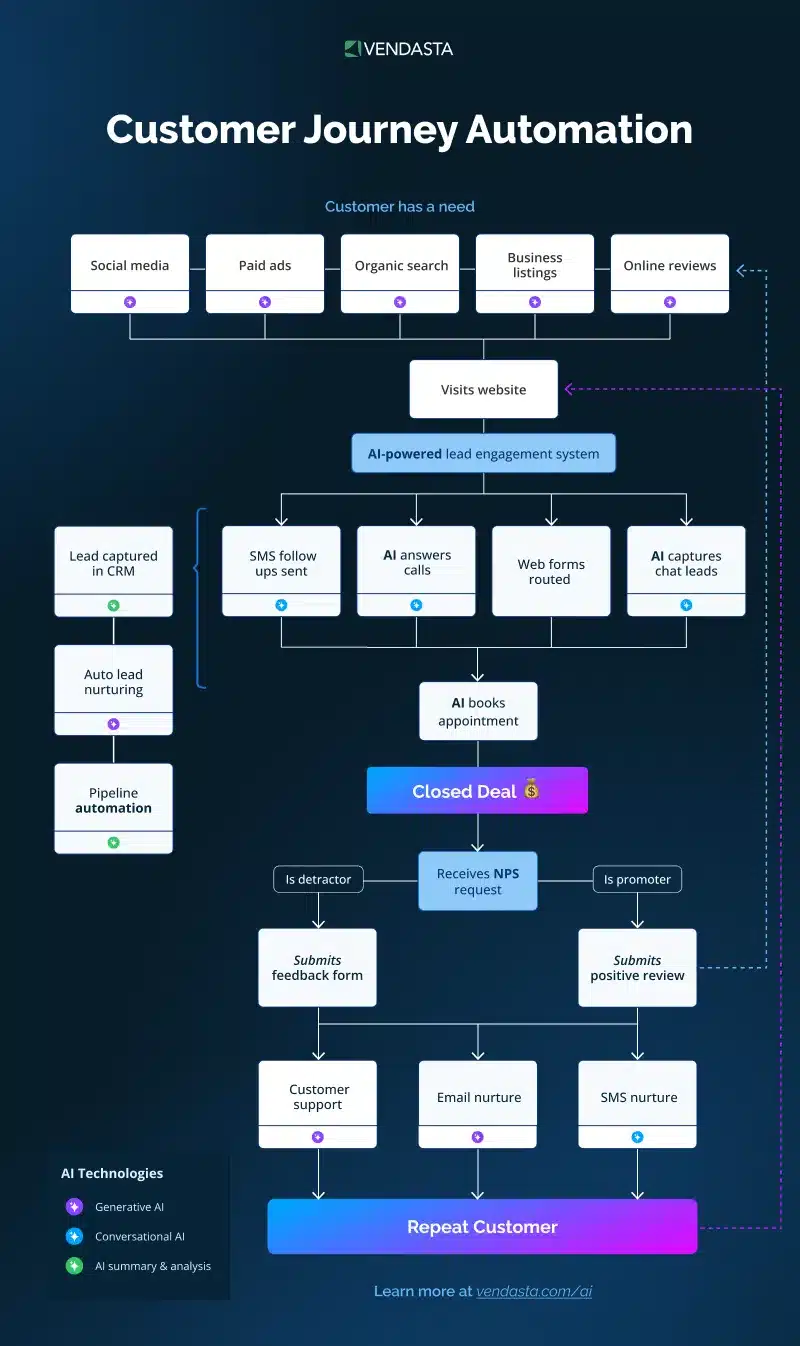
What Makes the Executive Report Different?
1. All-in-One Reporting Across the Customer Journey
From listings and SEO to social, ads, and reputation—Vendasta consolidates critical SMB metrics into one dynamic, white-labeled view. Powered by real-time data and automation, your clients get a clear picture of what’s working and where to optimize.
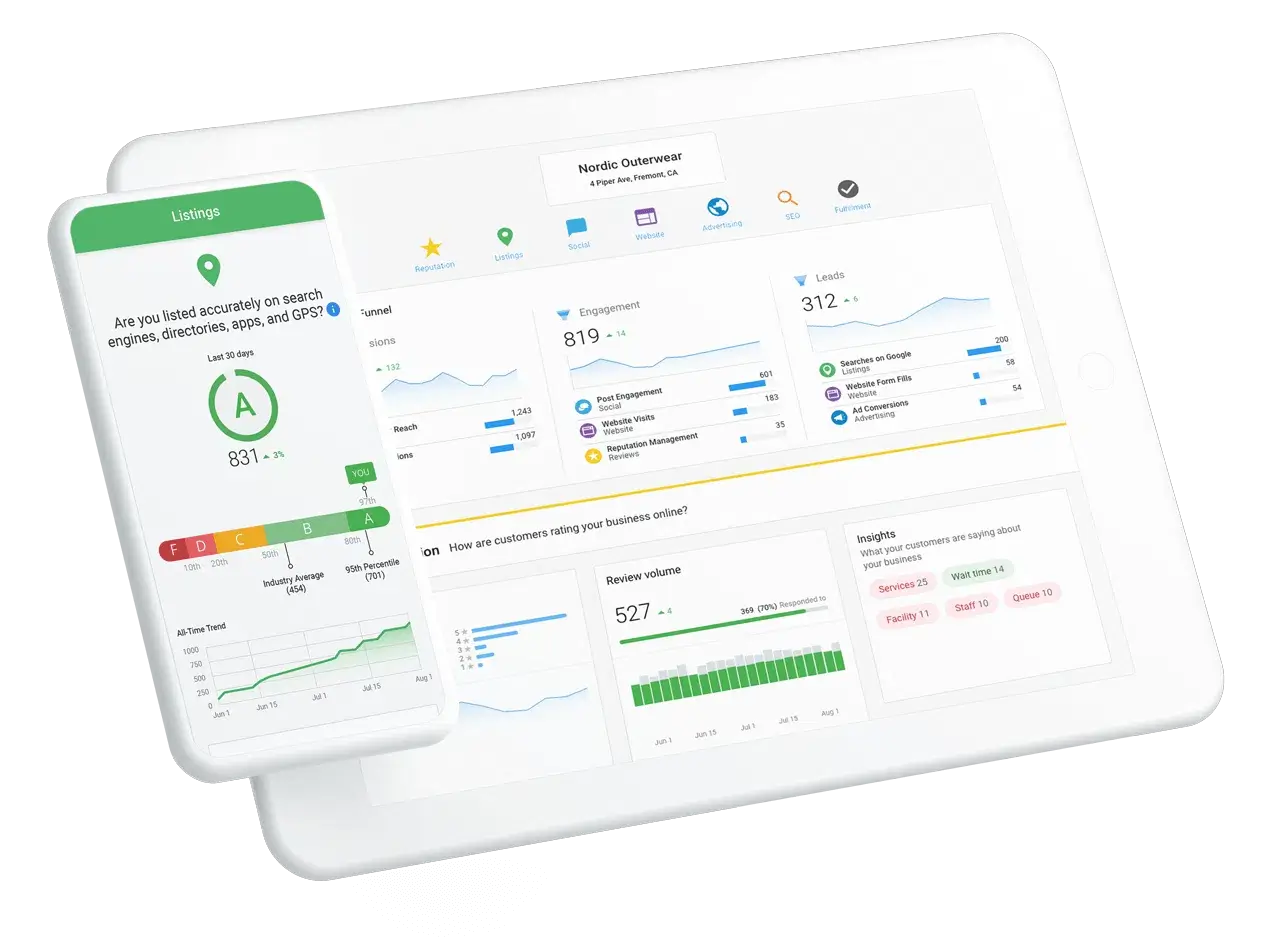
2. Branded and Automated for Maximum Efficiency
Your brand stays front and center—logo, colors, URL, even automated email alerts. Reports can be scheduled to send weekly or monthly, keeping your clients in the loop without you lifting a finger.
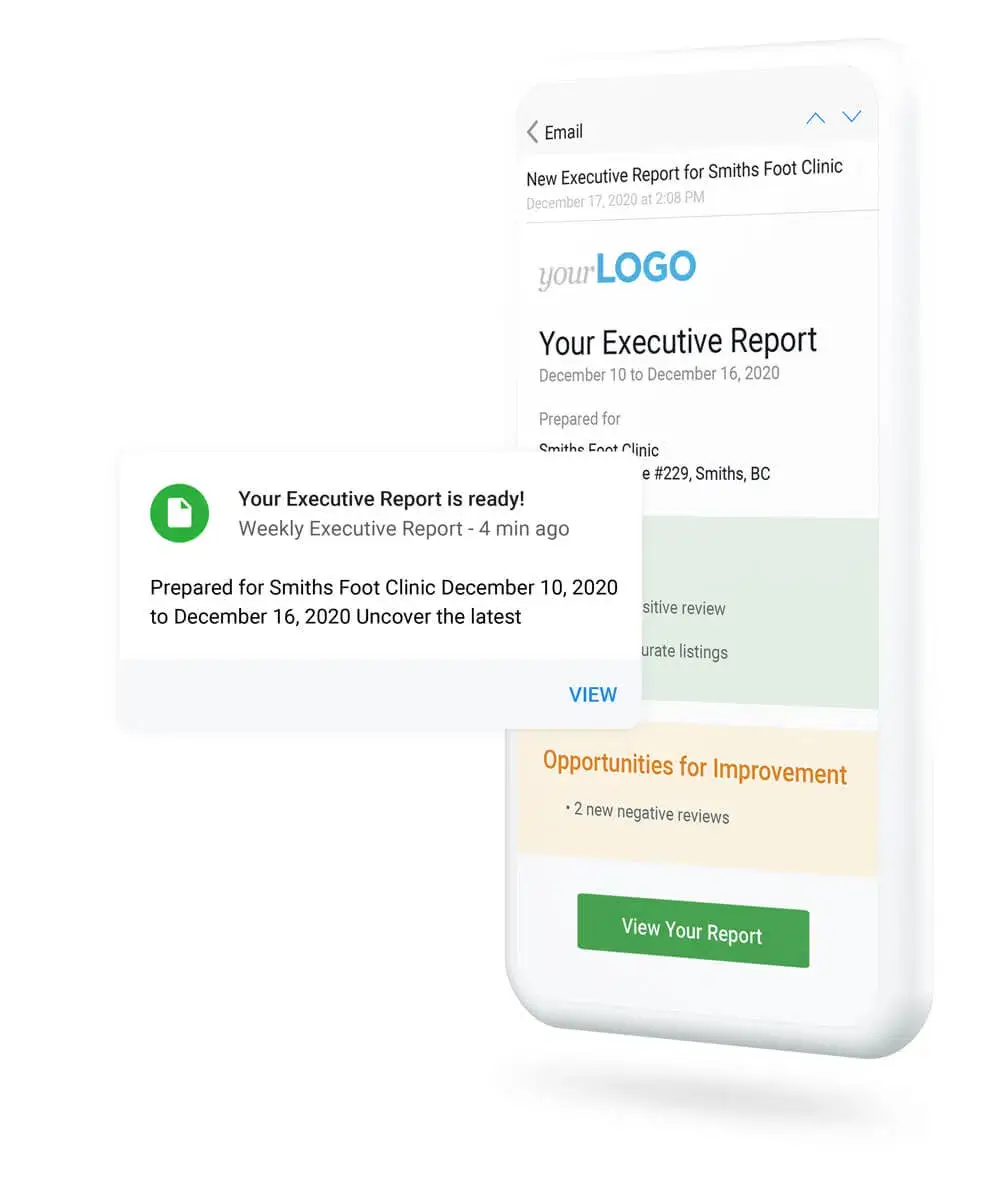
3. Interactive, Visual Dashboards Your Clients Will Actually Use
The Executive Report isn’t a static PDF—it’s an interactive tool your clients can explore. Each section includes visual summaries, performance trends, and insights tied directly to the solutions you provide.
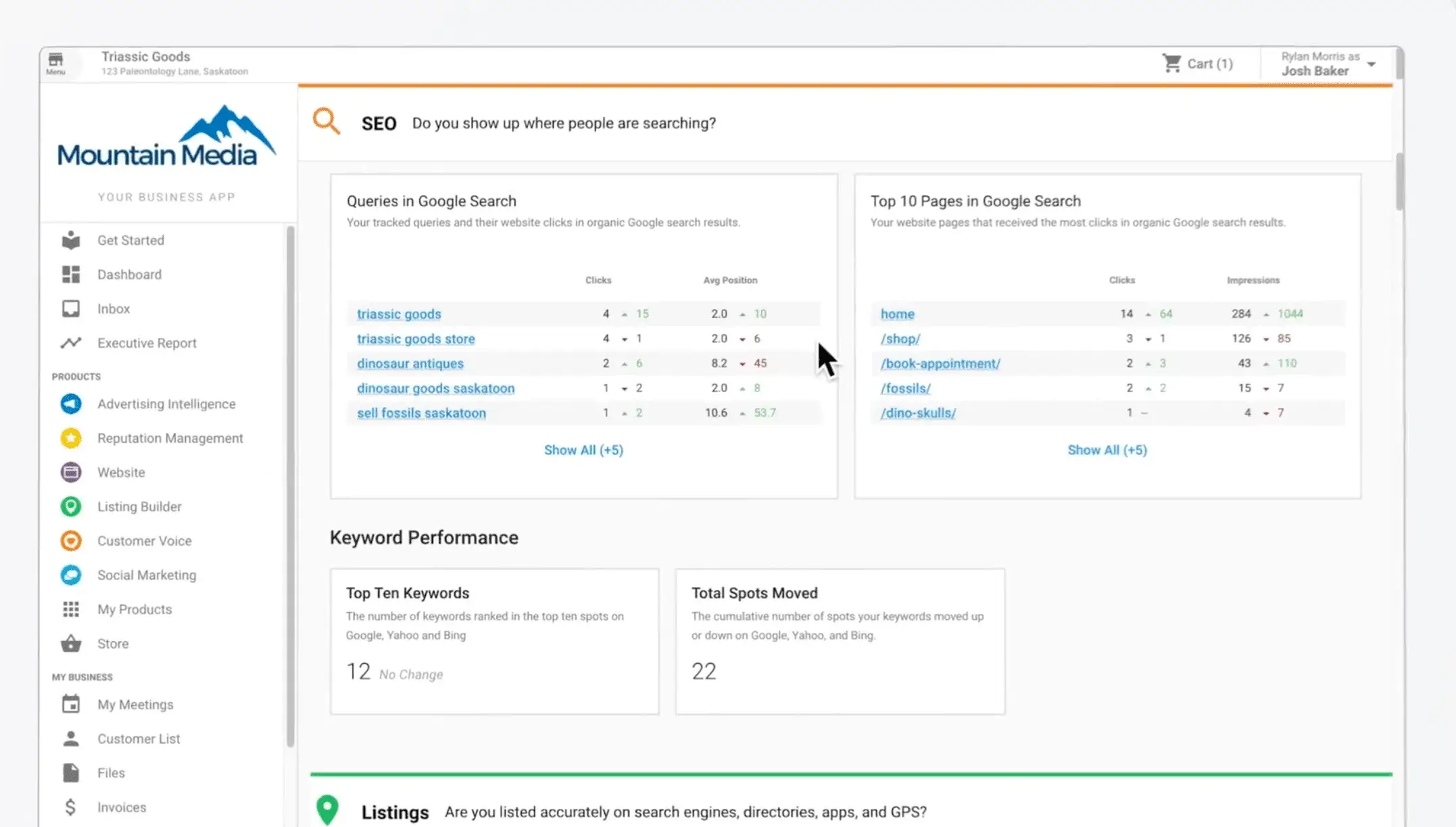
4. AI-Enhanced Insights That Drive Engagement
Our AI-powered customer acquisition and engagement platform combines your clients’ unique business data with AI to generate contextual insights—like opportunities for improvement, sentiment trends, or marketing funnel drop-off points. This makes it easier to position upsells, prove marketing ROI, and strengthen client relationships.
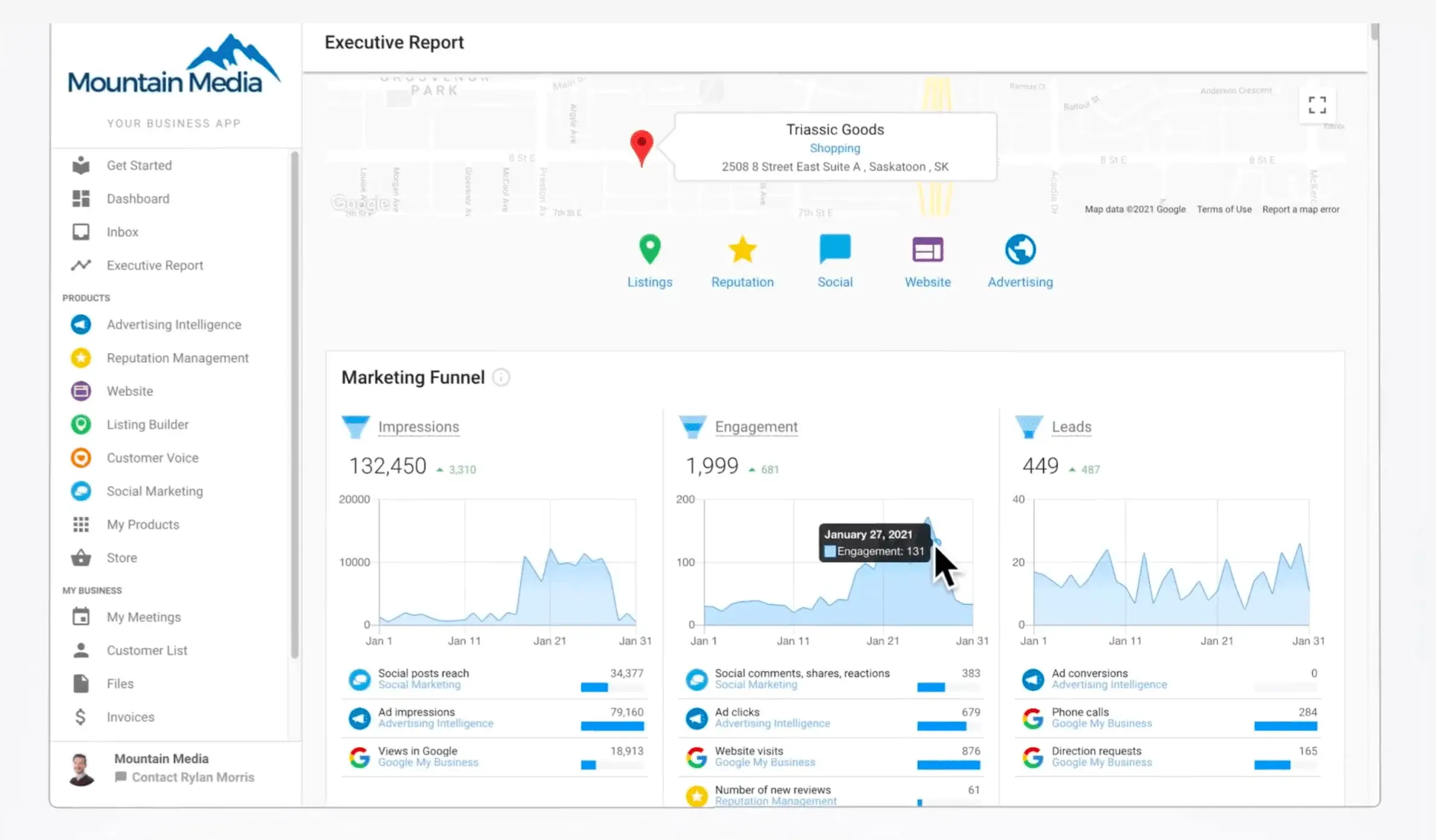
Why Partners Love Vendasta’s White-Label Reporting:
- Brandable from Top to Bottom: Add your agency’s logo, color palette, and URL for a completely white-labeled experience your clients will trust.
- Cross-Product Reporting: Consolidate metrics from across Vendasta’s Marketplace (and your own tools) into one cohesive dashboard.
- AI-Powered Insights: Executive Reports use Vendasta’s AI employees to interpret data, flag issues, and recommend solutions—automatically.
- Scheduled, Real-Time, and Mobile-Ready: Send reports weekly or monthly, offer real-time dashboard access, or notify clients when new data is available—all under your brand.

Let Vendasta Power Your White Label Reporting Strategy
White label reporting is no longer a nice-to-have—it’s a must-have for agencies, SaaS providers, and anyone serving SMB clients. The right platform can save time, build trust, and drive growth through automated, branded insights your clients will actually understand.
Vendasta’s white label reporting tools give you everything you need to prove performance, increase transparency, and drive customer retention—all while keeping your brand front and center. With AI-powered automation, multi-channel integrations, and fully customizable dashboards, Vendasta simplifies the reporting process and strengthens your client relationships.
Ready to see it in action? Book a free demo with Vendasta today and discover how effortless and impactful reporting can be.
White Label Reporting FAQs
1. What is white label reporting?
White label reporting is the process of delivering branded reports to clients that reflect your company’s logo, colors, and messaging. These reports are often automated and can include key marketing metrics like SEO, social media, and advertising performance.
2. How does white label reporting work?
White label reporting platforms pull data from marketing channels and compile it into a branded report. Tools like Vendasta’s Executive Report allow businesses to automate this process and deliver real-time or scheduled insights under their own brand.
3. Why is white label reporting important for agencies?
It helps agencies maintain brand consistency, save time through automation, and deliver professional insights that improve client satisfaction and retention. With Vendasta, agencies can easily scale reporting across all their SMB clients.
4. Can I automate white label reports?
Yes, many tools—including Vendasta’s platform—offer automated scheduling, real-time data syncing, and report generation. This ensures clients always have up-to-date insights without manual intervention.
5. What kind of metrics can be included in white label reports?
White label reports can include metrics like website traffic, SEO rankings, ad ROI, online reviews, social media engagement, and more. Vendasta’s Executive Report covers all major digital performance categories.
6. Do I need technical skills to use a white label reporting platform?
Not necessarily. Most platforms are designed for non-technical users with drag-and-drop editors, pre-built templates, and guided onboarding. Vendasta is built for ease of use—even for small teams.
7. Is white label reporting available for SaaS companies?
Yes, many SaaS companies embed white label dashboards into their platforms. Vendasta’s Executive Report is part of the client portal, delivering a seamless branded experience.
8. How secure is white label reporting for my clients’ data?
White label reporting platforms like Vendasta prioritize security with user roles, permission settings, and encrypted access to ensure client data remains protected.
9. Can I customize the look of my white label reports?
Absolutely. Vendasta allows full customization, including logos, brand colors, domain URLs, and even mobile-friendly reports, helping you maintain a consistent brand presence.
10. What’s the difference between white label and co-branded reporting?
White label reports reflect only your brand. Co-branded reports include both your and the tool provider’s branding. Vendasta offers 100% white label options to keep your brand front and center.
11. Does Vendasta offer real-time reporting?
Yes. Vendasta provides real-time dashboards that allow clients to track digital performance anytime, enhancing transparency and engagement.
12. Can I offer reporting as a service with Vendasta?
Yes, white label reporting can be sold as a standalone service or bundled with other digital solutions. Vendasta makes it easy to package and price this offering for your clients.
13. How do I choose the best white label reporting software?
Look for automation, customization, integration options, and ease of use. Vendasta checks all these boxes and includes built-in tools to help you scale.
14. Is there a mobile version of Vendasta’s white label reports?
Yes. Vendasta’s Executive Report is mobile-optimized and can send push/email notifications when new reports are ready—keeping your clients informed on the go.
15. Can white label reports help me upsell other services?
Definitely. By showcasing performance gaps and opportunities, Vendasta’s reports provide built-in prompts for upselling reputation, SEO, or advertising services.
16. How much does Vendasta’s white label reporting cost?
Pricing depends on your plan and the number of clients you serve. Vendasta offers scalable pricing options for agencies, franchisors, and technology providers of all sizes.
17. Can I add third-party data sources to Vendasta’s reports?
Vendasta supports integrations with multiple platforms and continues to expand its marketplace. You can incorporate third-party tools into one centralized reporting experience.
18. How long does it take to set up Vendasta’s white label reporting?
Setup is quick—often within a day. Vendasta’s onboarding team and documentation guide you through branding, data connections, and automation.
19. Is Vendasta’s white label reporting suitable for franchisors?
Yes. Vendasta is ideal for multi-location brands and franchisors, offering scalable reporting across locations with centralized control and localized insights.
This article was originally published in October 2023 and was updated in June 2025 to include the latest information and insights.


